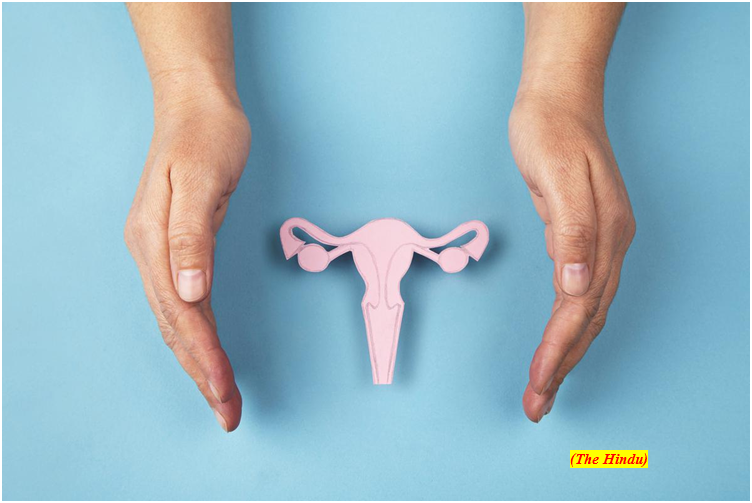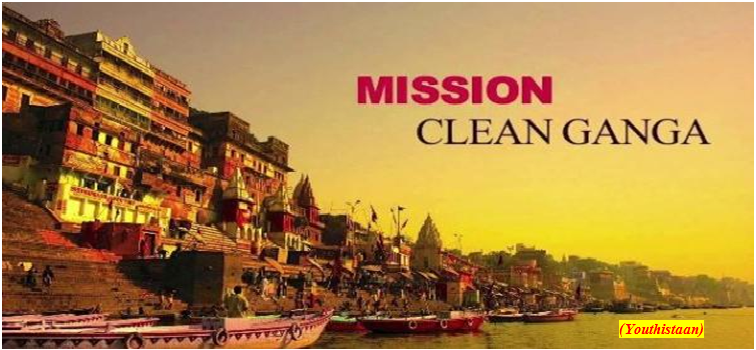How is India trying to beat cervical cancer (GS Paper 3, Science and Tech)

Why in news?
- The government has announced that it will roll out vaccines for the prevention of cervical cancer to girls aged between 9 and 14 years through schools.
Details:
- The National Technical Advisory Group for Immunisation (NTAGI) had recommended the introduction of the Human Papillomavirus (HPV) vaccine in the Universal Immunisation Programme (UIP).
- The UIP is one of the largest public health programmes which offers free vaccines for at least 12 diseases, and has successfully eradicated diseases like polio and maternal and neonatal tetanus.
Why is it important to launch the HPV vaccine?
- Cervical cancer is preventable and curable if it is detected early and managed effectively. It is the second most common cancer in women in India, and the cause of a large number of deaths annually.
- It is caused by infection with the human papillomavirus, and there are vaccines to protect against cancerous HPV.
- A recent study shows that India accounts for the highest number of cervical cancer cases in Asia, followed by China. More than 58% of all cases of cervical cancer and deaths globally were estimated in Asia with India accounting for 21% of cases and 23% of deaths, followed by China (18% and 17%).
- The WHO has specified that countries must reach and maintain an incidence rate of fewer than 4 new cases per 1,00,000 women a year by 2030.
- To achieve that goal, one of the most important things required is that 90% of girls will have to be vaccinated with the HPV vaccine by the age of 15.
When will it be rolled out?
- The indigenous HPV vaccine, called CERVAVAC, is likely to be rolled out by mid-2023. The vaccine has got the approval of the Drugs Controller General of India and was cleared by the government advisory panel, NTAGI, for use in the UIP programme.
- A one-time catch-up vaccine will be given to 9-14 year old adolescent girls, before it is introduced at nine years.
- States and Union Territories have been asked to issue directives to appropriate authorities for organising HPV vaccination centres in schools, and identifying a nodal person in each government and private school to facilitate the vaccination after collating the number of 9-14 year olds.
What happens to girls who don’t go to school?
- The government has clarified that girls who do not attend schools will be given the vaccines by community outreach and mobile health teams. Together with vaccination, screening programmes need to be conducted regularly to detect early signs of the disease that will allow time for treatment.
- The Ayushman Bharat Health and Wellness centres, announced in 2018, are already screening for common cancers like oral, breast and cervical, with over 5 crore women being screened for cervical cancer till November 2022.
- Besides, widespread vaccination, the WHO’s strategy targets for cervical cancer elimination by 2030 include screening of 70% women with a high performance test by 35 years of age and again by 45 years of age. It has also set a cervical cancer treatment target of 90% of women identified with the disease.
What lies ahead?
- Once the vaccine is launched through the UIP, it should reach the maximum number of the targeted population.
- The surveillance systems and infrastructure used for COVID-19 vaccinations may also be customised to improve HPV vaccination, monitor national cervical screening programmes and improve health system capacity to deliver more efficient preventive services.
National Clean Ganga Mission approves sewerage projects worth Rs 2,700 cr
(GS Paper 3, Environment)
Why in news?
- The 46th meeting of the Executive Committee of the NMCG was held recently.
- The Executive Committee of National Mission for Clean Ganga (NMCG) approved projects worth around Rs 2,700 crore for developing sewerage infrastructure in Uttar Pradesh, Bihar, Jharkhand and West Bengal.

Details:
- Of the approved projects, 12 pertain to the development of sewerage infrastructure in Uttar Pradesh, Bihar, Jharkhand and West Bengal, worth more than Rs 2,700 crore.
- Afforestation programmes for 2022-'23 for Uttarakhand and Bihar were also approved at an estimated cost of Rs 42.80 crore. These programmes aim to create an enabling environment for a climate-resilient and sustainable ecosystem management with a community participatory approach, said the Ministry of Jal Shakti.
West Bengal:
- In West Bengal, a big project for the Rejuvenation of River Adi Ganga, a tributary of Ganga, in Kolkata was approved at an estimated cost of Rs 653.67 crore. It includes the construction of three Sewage Treatment Plants (STPs) of 10 Million Litres per Day (MLD), 11.60 MLD and 3.5 MLD capacities.
Uttar Pradesh:
- A total of three projects were approved in Uttar Pradesh one of which pertains to the development of sewerage infrastructure in Prayagraj at a cost of Rs 475.19 crore. The Prayagraj project envisages the construction of a 90 MLD STP along with 20 KLD Faecal Sludge co-treatment facility and effluent station of 90 MLD, interception and diversion works, among others.
- Two other projects approved in Uttar Pradesh include the construction of a 50 MLD STP, incision and drainage and other works at an estimated cost of Rs. 264.67 crore at Loniapurva, Lucknow for River Gomti and 24 MLD STP, incision and drainage and other works at Hathras town for Rivers Sengar and Karwan at a cost of Rs 128.91 crore.
Bihar:
- In Bihar, one project each for Daudnagar and Motihari towns has been approved at estimated costs of Rs 42.25 and Rs 149.15 crore respectively.
- For Daudnagar, construction of a 10.50 MLD STP along with incision and drainage works and for Motihari, four STPs of 4.6, 6.3, 5.8, 6.3 MLD capacities and incision and drainage works have been proposed. In Bihar, four projects of cost enhancement were also approved.
Jharkhand:
- The project includes the construction of five STPs of total 192 MLD capacity (18+21+75+60+18), interception and diversion and other works at an estimated cost of Rs 808.33 crore in Dhanbad town.
- The Jal Shakti Ministry said this project is for pollution abatement in River Damodar, an important tributary of River Ganga and aims to tap all the drains falling into Damodar from the town, which indirectly pollutes the Ganga. With the approval of this project, all projects required for the abatement of pollution in River Damodar in Jharkhand have been approved.
Scientific exploration of floral diversity near the Ganga River banks:
- Another project titled 'Scientific exploration of floral diversity near the Ganga River banks for ethnobotanical purposes along with their conservation and economic development of the region via skill development programs' was approved in the Executive Committee meeting for all five states.
- The project will be implemented in collaboration with Patanjali Research Institute (PRI) and Patanjali Organic Research Institute (PORI), Haridwar, Uttarakhand.
Theproject has three components:
- Plant Biodiversity Exploration: Floral diversity, ethnobotanical, medicinal aspect and their phytochemical profiling for commercial valuation,
- Training and Skill Development: Stakeholders like farmers, traditional healing practitioners etc and
- Advanced Scientific Research and Experimentation: soil and water quality; their impact on floral phytochemical; soil microbe interaction and its effect, medicinal plant varieties & exploration of medicinal properties etc.
IT ministry appointed as nodal ministry for online gaming in India
(GS Paper 3, Science and Tech)
Why in news?
- The Ministry of Electronics and Information Technology (MeitY) has been appointed as the nodal ministry for online gaming in India.
- The President of India amended the Allocation of Business Rules to make the change.
- For e-sports, the Department of Sports, under the Ministry of Youth Affairs and Sports (MYAS), has been notified as the nodal agency.

Background:
- The Centre had been working on formulating rules for the sector for a while now.
- In May, a seven-member inter-ministerial task force was set up under the Minister of State for Information Technology Rajeev Chandrasekhar to select a nodal agency for the sector.
AVGC Taskforce:
- In a report released, the Animation, Visual Effects, Gaming and Comic (AVGC) Task Force said that the sector has the potential to raise India's soft power via inclusive growth.
- It recommended creating a dedicated production fund for domestic content creation from across India to promote Indian culture and heritage globally.
Significance of the move:
- A uniform central regulation for online skill gaming has been a long-standing demand of the industry and this step will hopefully lead to a progressive regulatory framework underpinned by consumer welfare. This will help further grow the industry and make online gaming a cornerstone of Digital India.
- The move to have MYAS regulate e-sports as part of multi-sports eventswill finally lead to the recognition of an India E-sports Federation, better rules and procedures for the selection of Indian teams for international events like the Asian Games.




